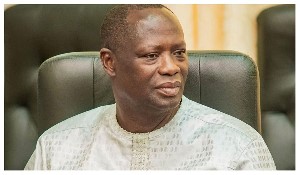By Kwasi Addae Owusu (MSc Logistics and Transportation)
Transport manager (Ministry of Health)
Accra.
In Ghana, the daily commute is more than a logistical challenge; it’s a quiet crisis. From the crowded tro-tros of Accra to the impassable feeder roads of the Northern Region, millions of Ghanaians are stranded by a public transport system that fails to serve them. And while the nation pushes forward with ambitious development goals, the wheels of progress grind slowly for those left behind.
A System Stuck in Neutral
Public transportation in Ghana is dominated by informal services, tro-tros, shared taxis, and okadas. These are lifelines for many, yet they operate with little oversight, poor safety standards, and unpredictable schedules. Formal options like Metro Mass Transit and Ayalolo buses exist, but their reach is limited and their reliability questionable.
The result? A transport landscape that is chaotic, inequitable, and deeply exclusionary.
Education: The Long Walk to Learning
In rural communities, students often walk miles to school. When roads flood or fares spike, attendance drops. Girls face added risks of harassment, fatigue, and social stigma. The education journey becomes a barrier, not a bridge.
In parts of the Upper East Region, students trek over 10 kilometers daily. During rainy seasons, many are forced to stay home, widening the gap between urban and rural learners.
Employment: Opportunity Out of Reach
Jobs are concentrated in urban centers, but without reliable transport, many qualified individuals in rural areas are cut off. Long commutes, high fares, and physical exhaustion reduce productivity and limit access to economic opportunity.
For informal workers and traders, delays mean lost income. For job seekers, transport costs can be the difference between employment and continued poverty.
Healthcare: A Dangerous Delay
In emergencies, time is life. Yet in many communities, ambulances are rare, and public transport is slow or unavailable. Pregnant women, the elderly, and the sick face life-threatening delays. Poor roads and vehicle shortages compound the crisis.
In the Volta Region, patients are often transported on motorbikes or carried on foot. Routine checkups are skipped, and preventable conditions become fatal.
Vulnerable Populations: Left Behind
The elderly, people with disabilities, and low-income families are disproportionately affected. Transport systems rarely accommodate their needs, making it harder to access services, participate in society, or live independently.
Few buses are wheelchair accessible. Long waits and physical discomfort make travel nearly impossible for many older citizens.
The Economic Toll
The inefficiencies in Ghana’s transport system have broader consequences:
Reduced productivity due to long commutes
Stifled growth in rural economies
Increased urban congestion and pollution
Higher cost of goods due to transport delays
What Must Change
Fixing Ghana’s transport system requires bold, coordinated action:
Expand rural transport networks with feeder roads and subsidized bus services
Modernize informal transport through regulation, safety standards, and driver training
Integrate transport with social policy, linking it to education, health, and employment
Invest in infrastructure and innovation, including smart transport systems and public-private partnerships
Conclusion: A Call to Move Together
Transportation in Ghana is not just about roads and vehicles; it’s about equity, dignity, and opportunity. When people are stranded by the system, they are stranded from progress. It’s time to build a transport network that moves all Ghanaians forward, not just a privileged few.



